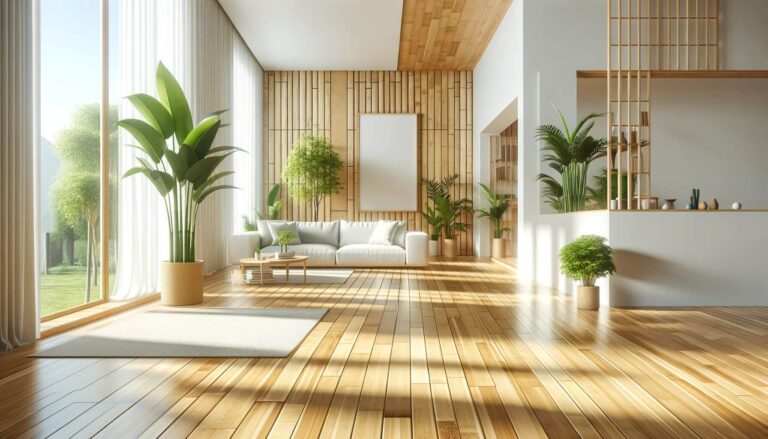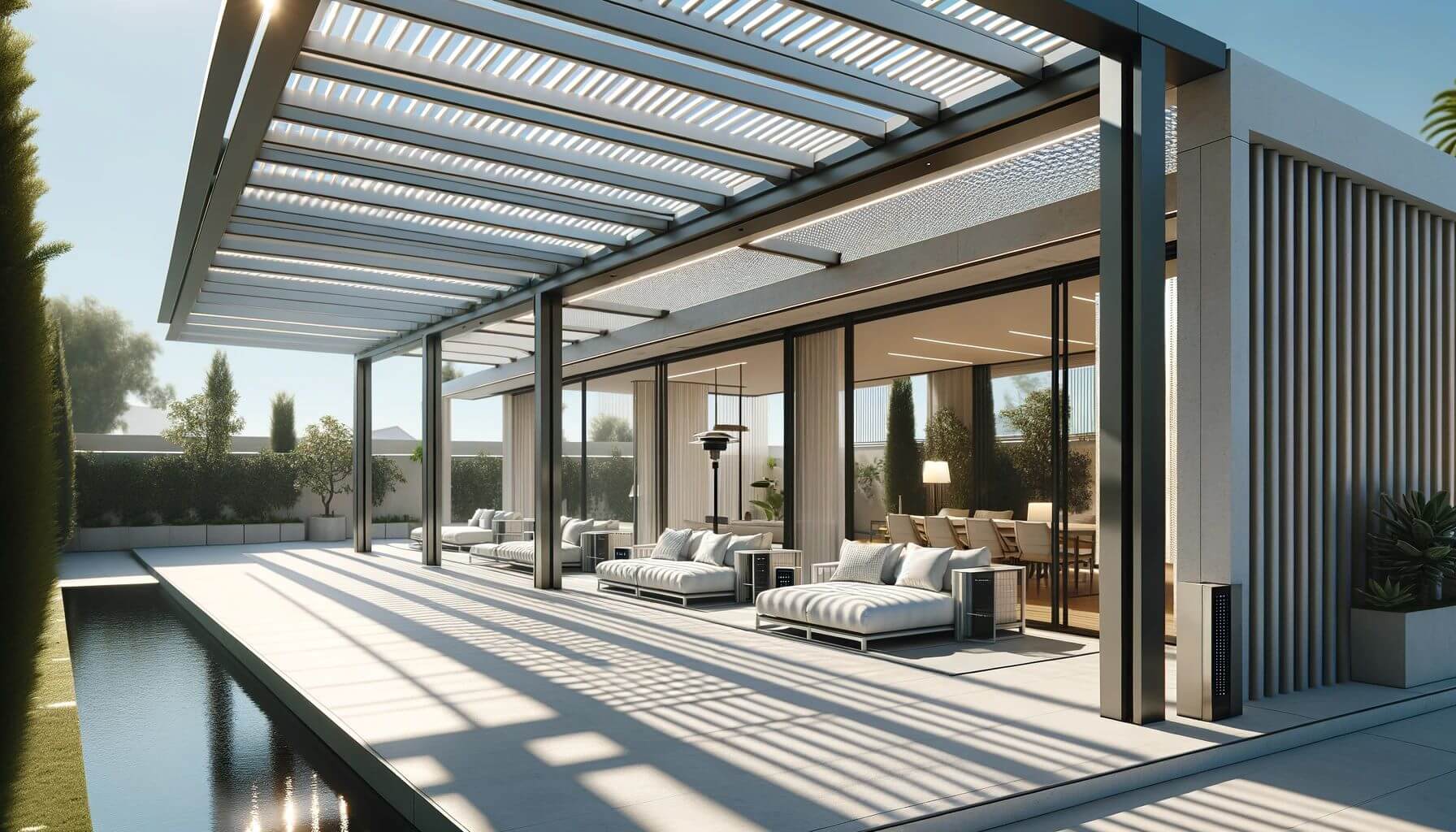
Pergolas, traditionally open and airy structures, are evolving. Today, the trend of enclosing pergolas is gaining momentum, transforming ordinary outdoor spaces into versatile, stylish havens. This shift is driven by the desire to boost comfort, privacy, and the overall usability of outdoor living areas throughout the year.
Indeed, the benefits of enclosing a pergola stretch far beyond mere aesthetics. They offer a practical solution for using your outdoor space regardless of the season. Whether shielding from the scorching summer sun or providing a cozy retreat in the chilly winter, enclosed pergolas promise year-round enjoyment. They do increase the privacy and comfort of your outdoor living areas but also add a significant layer of protection from the elements, extending the life and beauty of your pergola and its furnishings.
By adapting your pergola with thoughtful enclosure options, you can enjoy the best of both worlds, open when you want a breeze, or closed when you need shelter. Let’s explore how to customize your pergola with innovative design ideas that cater to both aesthetic allure and functional needs.
Understanding Pergola Enclosures
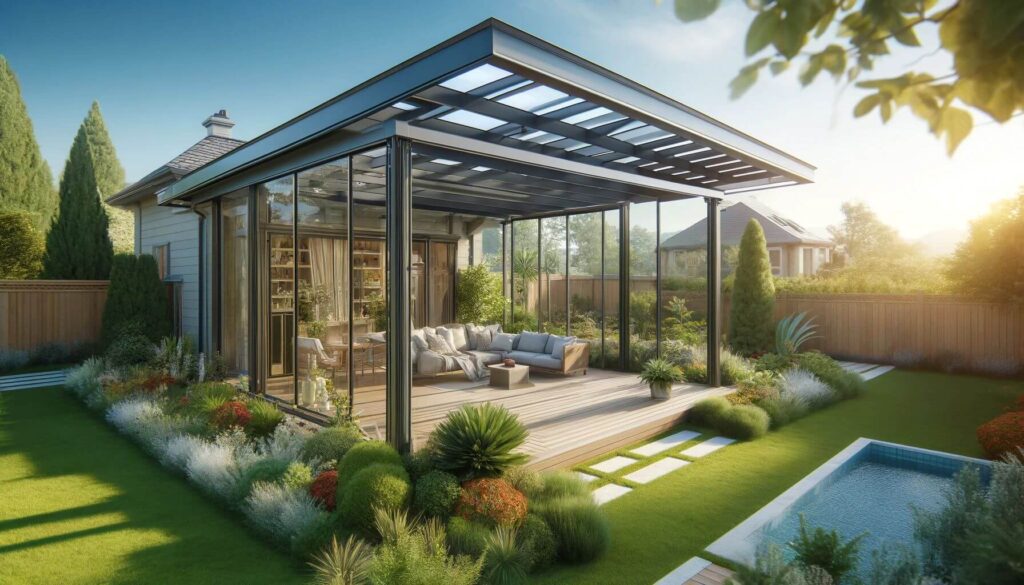
Pergola enclosures involve modifying traditional pergolas, typically open structures designed to support climbing plants and provide shade, with various additions that transform them into more secluded, sheltered spaces. These transformation range from installing retractable covers to adding fixed panels that shield against the elements, integrating seamlessly with the existing structure to boost both its functionality and visual appeal.
Definition and Purpose
At its core, the concept of a pergola enclosure is about versatility. It’s designed to convert your pergola into a space that’s beautiful and highly functional. This transformation allows homeowners to enjoy outdoor living areas in multiple seasons, under different weather conditions, without sacrificing comfort or style.
Enclosures can be made using a variety of materials including glass, wood, fabric, and polycarbonate, each contributing to the pergola’s aesthetic in unique ways. The purpose of these enclosures extends beyond just protection from the weather; they also strenghten privacy. This is particularly beneficial in densely populated areas, where backyards may not naturally have a lot of secluded space.
Weather and Privacy Concerns
The primary driver for many when enclosing a pergola is to combat the unpredictability of weather. Whether it’s the intense summer heat, unexpected rain showers, or chilling winter breezes, an enclosed pergola ensures that none of these will disrupt your outdoor leisure time. For instance, with the installation of a louvered roof, homeowners can adjust the panels to the desired angle, controlling sunlight exposure and ventilating the space as needed.
In addition to weather protection, these enclosures significantly improve the privacy of your outdoor areas. By adding curtains, frosted glass panels, or even solid retractable covers, you can shield your space from prying eyes and enjoy a more intimate setting. This makes pergola enclosures ideal for those who cherish their privacy and prefer a more exclusive outdoor experience.
Furthermore, these enhancements meet practical needs and also add to the visual charm of the structure. They can be customized to complement the architectural style of your home, making them not just functional but also a stylish addition to your property.
By understanding these key aspects and purposes of pergola enclosures, homeowners can make informed decisions on how to best adapt their outdoor structures to meet their needs for comfort, privacy, and aesthetic appeal. Now, let’s look at some of the most popular and effective design ideas for pergola enclosures.
Transforming Your Enclosed Pergola with Design Ideas
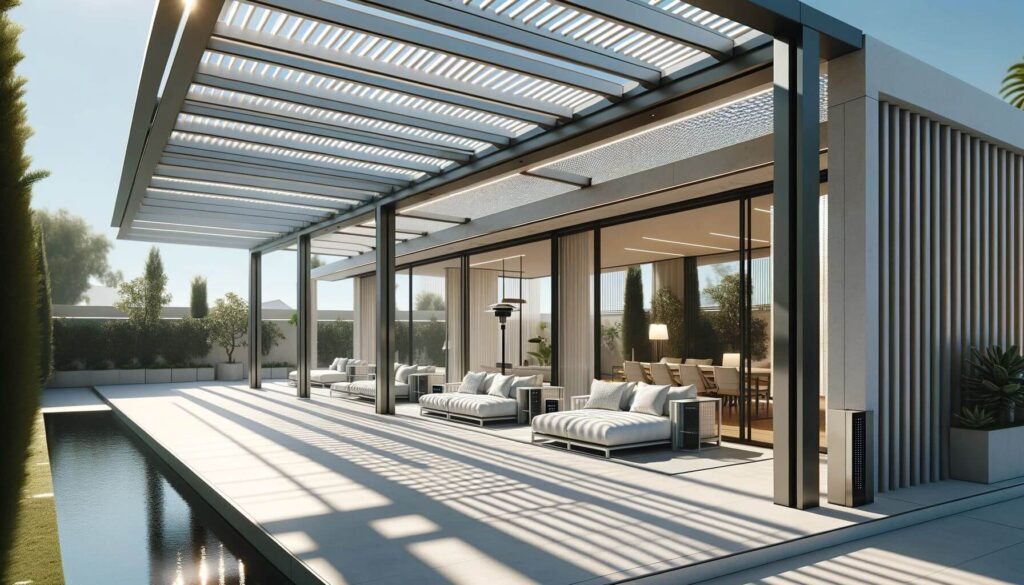
Enclosed pergolas can be tailored to fit any design aesthetic from the ultra-modern to the timelessly traditional. Here, we explore various styles and their functionalities to help you decide the best fit for magnifying your outdoor space.
Contemporary Enclosures
Description:
Contemporary pergola enclosures often feature clean lines and high-tech materials. Utilizing retractable blinds or shade screens, these modern structures provide a sleek look while offering practical benefits. The flexibility of retractable components allows homeowners to transform their space with the touch of a button, adapting quickly to changes in weather or personal preference.
Benefits:
The main allure of contemporary enclosures lies in their minimalist aesthetic and customizable functionality. Retractable options allow for easy adjustments to lighting and exposure. They also enable precise temperature control throughout the seasons. Such setups often integrate seamlessly with modern home automation systems, enhancing ease of use and efficiency.
Functional Elements:
- Retractable Blinds/Shade Screens: These elements offer dynamic control over sunlight and shade, allowing you to enjoy natural light when desired and ample shade when necessary. They can be easily adjusted to accommodate the sun’s position throughout the day.
- Electronic Heaters: Perfect for cooler days, integrated electronic heaters ensure the pergola remains comfortable and usable, even as temperatures drop. These heating elements can be controlled remotely and are often energy-efficient, making them a smart addition for year-round comfort.
- Smart Lighting: Incorporating LED lighting systems that can change color and intensity helps set the mood and extends usability into the evening. Smart lights can be programmed and controlled via smartphone apps, providing ultimate convenience.
- Weather Sensors: Some contemporary pergolas are equipped with weather sensors that automatically adjust the blinds and activate heating elements based on real-time weather conditions, ensuring optimal comfort without any hassle.
These contemporary designs will boost the functionality of traditional pergolas and boost the outdoor living experience with their advanced features and adaptable nature. Whether you’re looking to create a vibrant space for gatherings or a quiet nook for relaxation, modern enclosures offer the flexibility and control to perfectly match your lifestyle needs.
Classic Enclosures
Description:
Classic pergola enclosures embrace the elegance of traditional design with a focus on durability and style. These enclosures typically feature robust canopies or high-quality shade cloths complemented by luxurious side curtains or wooden panels that amplify both their functionality and aesthetic appeal. The materials used are often chosen for their ability to withstand the elements while providing a timeless look that complements any garden or backyard design.
Charm and Utility:
The primary appeal of classic pergola enclosures lies in their sophisticated appearance which echoes the designs of a bygone era, making them perfect for homes with traditional architecture. The side curtains or panels add a touch of elegance by increasing privacy. Thus they will make your pergola a secluded retreat.
- Protection from Elements: The thick fabrics and sturdy materials used in classic designs are ideal for protecting against UV rays, rain, and wind, thereby add to the pergola’s usability no matter the weather.
- Sophistication and Privacy: With the addition of drapes and decorative panels, these pergolas offer an intimate space for relaxation and entertainment, shielded from outside disturbances.
- Versatility: Many classic enclosures are designed with flexibility in mind, featuring retractable canopies and curtains that can be adjusted according to the weather or personal preference.
These features make classic enclosures a protective covering and a significant transformation of the outdoor décor. They provide a perfect blend of utility and timeless charm.
Transitional Patio Enclosures
Concept:
Transitional patio enclosures represent a hybrid design that combines the best aspects of covered patios and open pergolas. This design approach is ideal for those who appreciate the openness of pergolas but desire more protection and utility.
Structural Designs:
- Clear Glass Covers or Panels: Utilizing clear glass helps maintain the visual aesthetics of an open pergola while protecting the space from the elements. Glass panels allow for unobstructed views and natural light to flood the space, maintaining a connection with the outdoor surroundings.
- See-Through Roofs: Often made from polycarbonate or other translucent materials, see-through roofs provide essential shelter without compromising on light. This design element ensures that the pergola retains its airy feel while being usable in various weather conditions.
Advantages:
- Protection from Weather: The solid yet transparent coverings shield users from rain, snow, and excessive sun, making the pergola a year-round feature of your garden.
- Enhanced Natural Light: By using glass and other clear materials, these enclosures allow maximum light penetration, brightening the space without the need for extensive artificial lighting during the day.
- Aesthetic Appeal: Transitional designs are modern and sleek, fitting well with both contemporary and traditional homes. The use of glass and similar materials lends a luxurious touch to the enclosure.
Transitional patio enclosures are perfect for those who want the best of both worlds – the freshness of an open garden and the comfort of a sunroom. They provide a practical yet beautiful extension of your living space, ideal for any season and weather condition.
Seasonal Adaptation Strategies
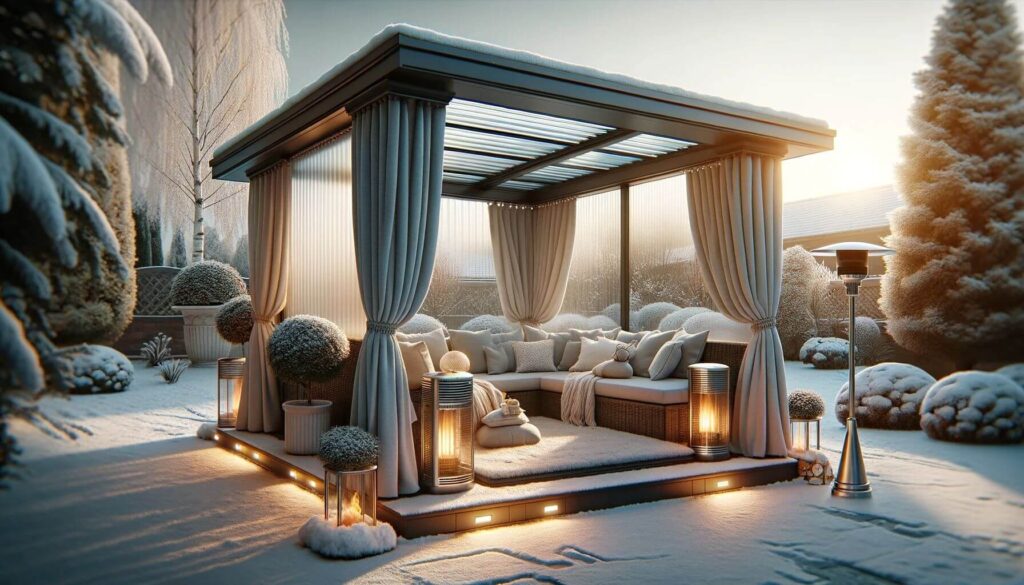
Adapting your pergola for different seasons ensures it remains a comfortable, functional space all year round. Whether basking in the summer sun or cozying up during the winter chill, your enclosed pergola can offer the perfect retreat with the right modifications.
Summer Adaptations to Transforming Your Pergola
Ventilation and Cooling:
To combat the summer heat, effective ventilation is crucial. Installing louvers can greatly improve air circulation, creating a breeze and reducing the temperature. Louvers can be adjusted to control the amount of sunlight entering the pergola, which in turn helps in maintaining a cooler environment inside.
- Cooling Systems: Consider incorporating mist cooling systems that provide a refreshing mist to cool down the area quickly without making it uncomfortably damp.
- Shade Solutions: Retractable canopies or rolling blinds can also be employed to provide shade and reduce heat without completely sealing off the outdoor feel.
Light Control:
Managing the intense summer sun involves strategic placement and use of covers to protect against UV rays while still enjoying the natural light.
- Translucent Covers: Using materials like frosted polycarbonate for the roof or sides can help diffuse bright sunlight, reducing glare and heat absorption.
- Reflective Materials: Incorporating reflective materials in your pergola design can help reflect back the sunlight, keeping the enclosed area naturally cooler.
These adaptations to transforming your pergola will improve comfort and protect you and your furniture from the potential damages of prolonged sun exposure. Also, they will make your pergola a cool oasis during the hot summer months.
Transforming Your Pergola with Winter Adaptations
Enclosure Tips:
Winter demands a snug and warm outdoor environment, and modifying your pergola with suitable enclosures can provide that.
- Louvered Roofing: This option allows you to adjust the slats for sunlight intake during the day and close them completely to retain heat during cold evenings.
- Polycarbonate Roofing: Opting for polycarbonate materials is beneficial as they are durable, retain heat well, and block out the cold wind while still letting light in.
Heating Solutions:
Adding a heat source is essential to use the pergola in colder months.
- Built-in Fireplaces: A classic addition that heats up the space and adds an element of rustic charm.
- Electric Heaters: For a more modern approach, installing wall-mounted or freestanding electric heaters will keep the area warm and cozy.
Insulation Methods:
Proper insulation helps in maintaining the desired temperature within the pergola.
- Thermal Curtains: Heavy-duty outdoor curtains or blinds can dramatically increase heat retention and provide an additional barrier against the cold.
- Rugs and Throws: Adding floor coverings and blankets can help insulate the space from the cold ground up, increasing warmth and comfort.
Benefits of Enclosing a Pergola
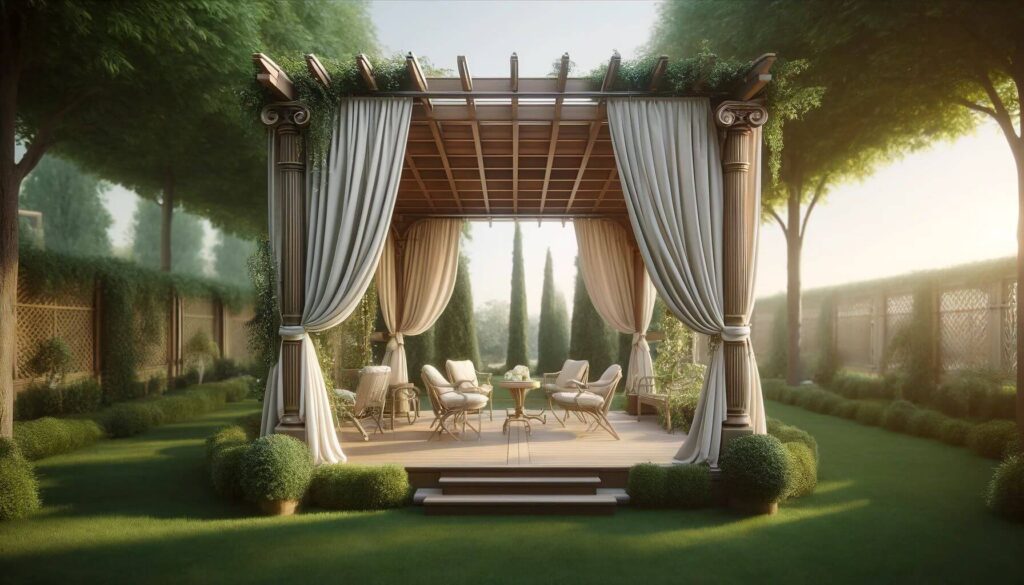
Enclosing a pergola transforms it aesthetically and increases its usability and functionality significantly. Here are the key benefits that an enclosure can bring to your pergola, making it a more enjoyable and comfortable space.
Improved Privacy
Enclosures provide a high degree of privacy, turning your outdoor area into a secluded oasis. Whether you’re enjoying a quiet meal, a relaxed afternoon book session, or a lively family gathering, having an enclosed pergola ensures that these moments remain private and intimate.
- Curtains and Panels: Adding drapes, curtains, or sliding panels can shield you from neighbors’ eyes and passersby, ensuring that your pergola is a private retreat.
- Frosted Glass or Tinted Panels: These can also be used to maintain privacy while letting light in, offering a perfect balance between seclusion and openness.
Protection from Elements
A well-enclosed pergola acts as a robust barrier against various elements, thereby extending the range of conditions under which your outdoor space can be enjoyed.
- Weatherproof Materials: Using weather-resistant materials like thick glass, polycarbonate, and solid wood ensures that the pergola can withstand adverse weather conditions such as heavy rains, snowfall, and strong winds.
- Roofing Choices: Options like retractable roofs, waterproof awnings, or fully covered polycarbonate roofs provide reliable shelter, ensuring that neither rain nor excessive sun interrupts your outdoor relaxation.
Pest Control
One of the more overlooked yet significant advantages of enclosing a pergola is the protection it offers against pests and insects, which can be particularly bothersome during warmer months.
- Screen Mesh: Incorporating screen meshes around the pergola can keep out mosquitos, flies, and other insects, allowing you to enjoy the fresh air without the annoyance of bugs.
- Sealed Edges: Properly sealed edges and junctions ensure that there are no gaps for smaller insects to enter, keeping the pergola bug-free and comfortable.
Flexibility and Adaptability
The ability to adapt your pergola to different weather conditions and personal preferences is perhaps one of the greatest benefits of an enclosure.
- Adjustable Louvers: These allow you to control the amount of sunlight entering the pergola. They can be tilted to offer more shade during the hottest parts of the day or opened up to let in light and air when needed.
- Modular Designs: Some pergola enclosures are designed to be modular, meaning panels, screens, and roofs can be added or removed depending on the season or your requirements, offering unmatched flexibility.
These improvements will increase the comfort and functionality of your pergola. Also, they contribute to its overall aesthetic appeal, potentially increasing your home’s market value. With these benefits in mind, it’s clear that enclosing a pergola can significantly enhance your outdoor living experience by making it more versatile, comfortable, and enjoyable throughout the year.
Implementing Your Enclosure
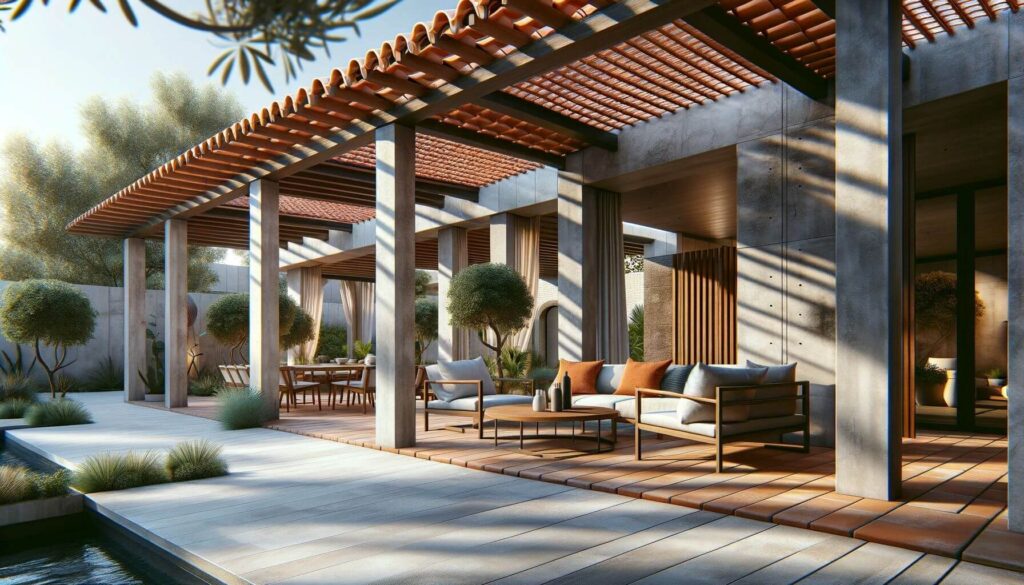
Successfully enclosing your pergola involves careful planning and consideration of various factors, including material choices, design preferences, and the method of installation. Here’s how to approach this project to achieve the best results:
Material and Style Considerations
Choosing the right materials and styles for your pergola enclosure influences its overall durability, aesthetic appeal and integration with your home’s existing design.
- Material Choices:
- Polycarbonate: Offers high durability and excellent weather resistance, ideal for both roofs and walls.
- Glass: Provides a clean, modern look and allows for maximum light exposure while offering the option for tinting for privacy and UV protection.
- Wood: Enhances the natural look, perfect for traditional home styles; requires treatment for weather resistance.
- Metal (Aluminum, Steel): Offers a sleek, contemporary feel with high durability; great for structures and frames, especially in retractable models.
- Fabric (Canvas, Vinyl): Suitable for soft enclosures like curtains or retractable canopies; provides flexible usage and easy maintenance.
- Style Adaptation:
- Ensure the enclosure complements the architectural style of your home. For instance, a modern home might benefit from minimalist, sleek enclosures with metal frames, while a cottage-style home might look best with wood and soft fabric enclosures.
- Consider the color scheme and finish to make sure it blends seamlessly with the exterior settings of your house.
Professional Help vs DIY
Deciding whether to hire professionals or to undertake the project yourself depends on the complexity of the design and your competency in DIY projects.
- Professional Installation:
- Benefits: Professional contractors can ensure that the installation is done efficiently and correctly, which is particularly important for complex designs or materials like glass and heavy woods.
- Considerations: It’s crucial to choose a contractor with experience in outdoor structures to ensure the quality and durability of the enclosure. Always check their credentials and past work before hiring.
- DIY Projects:
- Feasibility: Simple enclosure designs, such as those using curtains or light wooden panels, can be managed as DIY projects. Many manufacturers provide ready-to-assemble enclosure kits that come with pre-cut materials and instructions.
- Tools and Skills Needed: Ensure you have the necessary tools and understanding of the construction process. Basic carpentry and masonry skills will be beneficial.
- Cost-Effectiveness: DIY can significantly reduce costs, especially in labor. However, consider potential mistakes and mishaps that might increase your expenses, weighing them against the professional installation.
Best Practices for Implementation
- Planning: Measure your space accurately and plan the layout meticulously to ensure all components fit perfectly.
- Regulations: Check local building codes and regulations to ensure your pergola enclosure meets all legal requirements.
- Weather Considerations: Choose materials and designs that can withstand local weather conditions, this includes considering the load-bearing capacity of the roof if you live in an area with heavy snowfall.
You can implement a pergola enclosure that meets your aesthetic and functional needs. This will also enhance your property’s value and your enjoyment of your outdoor space.
Innovation in Transforming Your Pergola
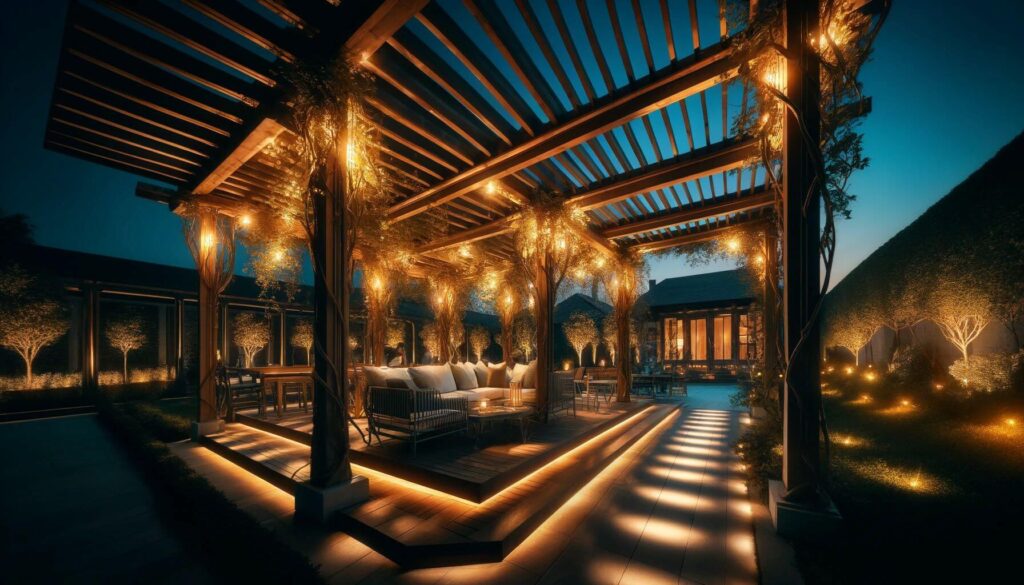
Pergola enclosures are more than just a stylish addition to your outdoor space, they are a transformative improvement that extends the functionality, comfort, and usability of your home’s exterior. Aesthetically, they elevate the garden’s ambiance, blending seamlessly with both modern and traditional architectures while offering a tangible sense of seclusion and sophistication. Practically, they protect against the vagaries of weather, enhance privacy, and control pests, making your pergola a year-round destination for relaxation and entertainment.
From the sleek, adjustable louvers of contemporary designs to the timeless charm of classic canopies and the hybrid flexibility of transitional styles, pergola enclosures meet a wide array of personal tastes and functional demands. They adapt to changing seasons with ease, whether through retractable elements that customize exposure to the elements or through robust, permanent structures that stand guard against winter’s chill.



